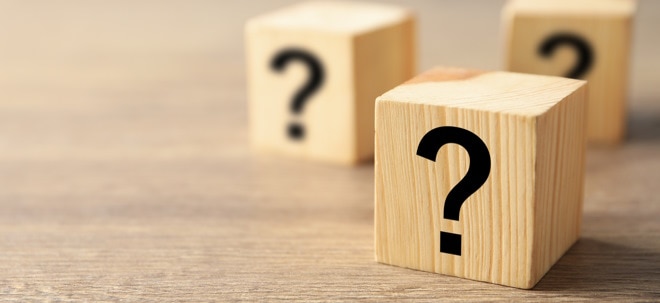...die letzten Zahlen waren mehr als in Ordnung, der Restrukturierungsplan ist "on track", der Schuldenabbau schreitet voran und ab dem kommenden Jahr ist wieder mit Wachstum zu rechnen. Es sind viele neue Produkte in der Pipeline, welche langfristig für Wachstum sorgen können. Der Markt übertreibt meiner Meinung nach in der Bewertung von Teva deutlich nach unten. Diese Übertreibung wird sich auch wieder normalisieren - ich nehme diese Schwächephase der letzten Monate dankend an und stocke meine Anteile an Teva kontinuierlich auf.
Das gibt meine Meinung ziemlich gut wieder:
https://seekingalpha.com/amp/article/4263780-teva-tarred-feathered
I guess the reason for this extreme negativity is not the debt load (it is probably sustainable, although it will take years to bring it down to normal levels) or a potential fine (which would materialize anyway only several years from now, as all defendants will drag their feet and push settlements as far as possible into the future).
The reason for this negativity is probably just that: negativity. Sometimes the stock market develops a self-enforcing vicious cycle of negativity, where every press release and every news report apparently makes things only worse.
Some sober facts
Looking at the list of past large settlements in the pharma sector, the largest civil settlement ever was $2B. In this case, we are looking at a 19-month period, during which Teva's global sales and net profits reached ~$30B and ~$3B, respectively. Its U.S. generics sales in 2014 were $4.4B, with estimated operating profits of about $1.1B and net profits around $700m. For 19 months, this makes estimated net profits from U.S. generics of about $1.1B.
For example, in the famous Risperdal case, Johnson (JNJ) paid $1.7B in civil penalties and $500m in criminal fines for its conduct over 6 six years, during which Risperdal sales totaled close to $12B and net profits from the drug presumably exceeded $2.5B.
So it is unlikely that Teva will have to pay more than its net profits from U.S. sales over the 19-month period in question, i.e. the upper limit is probably much less than $1.1B, since the majority of its products are not even mentioned in the suit.
Moreover, the suit will likely drag on for several years, finding Teva in much better shape when it comes to paying these dollars. Finally, the NPV of a fine that maybe will be paid several years from now is less than its nominal amount. But the market - that should have known something about this suit - cut $2.3B from Teva's market cap. This comes in addition to a sell-off that had already reduced expectations for the company dramatically - despite Kåre "Hardcore" Schultz' turnaround being actually pretty much on track.
So maybe the market is afraid that Teva still enjoys inflated profits in its U.S. generics business unit? I.e., once pricing normalized, its profits would take a hit. So let's look at last quarter's numbers:
Total U.S. sales were roughly $2B, half of which were from generics. Total U.S. operating profit (Non-GAAP, i.e. excluding mainly asset impairments and restructuring) was about $500m. Normally generics should enjoy lower margins compared to branded drugs, but since we are suspicious of inflated prices, let's assume generics had the same profit margins as Copaxone, Ajovy and other branded drugs. So Teva might have made ~$250m of operating profit from its U.S. generics sales - at best, probably. Net of proportionally allocated interest and taxes, this shrinks to ~$160m of net profit (non-GAAP). This represents a 16% net profit margin, which is pretty normal for the sector. Sure, it could shrink, but at worst ~$600m/year of net profits and cash flow are at risk (i.e. about one third of overall profits), otherwise Teva could just as well stop selling generics in the U.S.
Yesterday, Teva lost $2.3B of market cap. This could represent the fine it is expected to pay (but the lawsuit was already known and some of this risk should have been priced in) and some margin reduction. For example, a ~$1B fine discounted back to today, plus a 25% margin reduction, capitalized at a 10x multiple. (A 25% margin reduction would impact net profits by ~$160m annually, which at 10x would be worth $1.6B of market cap.)
So from this point of view today's sell-off seems quite rational (if we assume nothing of all this had already been priced in - which is very unlikely).
Another way to gauge how inflated U.S. generics profit margins might be, would be to look at the other geographies, especially Europe, since it is large and diversified enough to be a fair comparison. Total European sales in Q1/19 were $1,264m and non-GAAP operating profit was $403m. Interestingly, generics represented 73% of these sales. Hence, even if the other products (mainly Copaxone and respiratory products) had an incredibly large ~60% operating margin (for comparison, Johnson has a 25% average EBIT margin), thus raking in $207m of operating profit, generics still contributed $196m to operating profit. Which means a 21% operating margin and a 14% net margin. Since generic pricing is very unlikely to be inflated in Europe, a non-GAAP net margin of about 15% seems to be absolutely achievable without price gouging in this segment.From this point of view it looks like pricing has already deflated totally in the U.S., since margins in Europe might even be higher. For example, if the branded products had "only" a 30% EBIT margin, generics contributed $300m to EBIT, with a 33% EBIT margin and a 21% net margin.
Bottom line
Probably the risk of significant "air cushions" in Teva's U.S. profit margins is quite low. Moreover, some risks related to large fines should have been expected by investors. So yesterday's sell-off is probably not that rational.
|

 Thread abonnieren
Thread abonnieren

